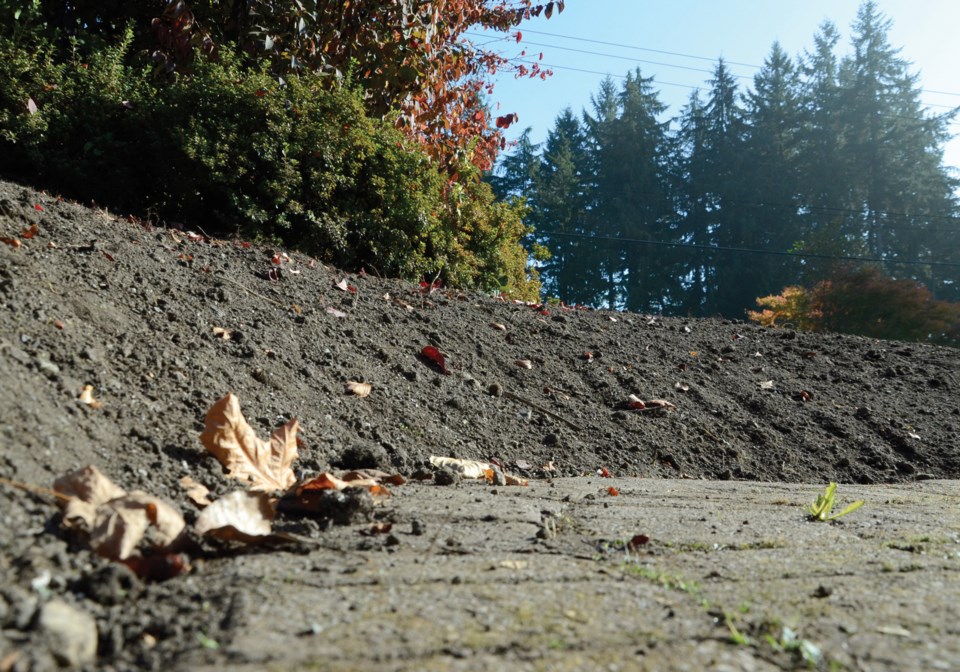Whenever you try something new there are always going to be some people who aren't ready to accept change and they will resist the idea.
Case in point, a story by Jacob Zinn of the Surrey Now newspaper (thenownewspaper.com) entitled Raised Bed Garden Causes Bylaw Stink in Surrey, in which a Surrey couple was told their hügelkultur gardening style contradicts the city's unsightly premises bylaw.
Hügelkultur is a sustainable style of gardening that has been in practice for centuries in parts of Eastern Europe. Hügelkultur, or "mound culture" as the word roughly translates from German, uses the concept of placing logs, stumps, tree branches and other woody debris into precisely arranged piles. The wood debris is then covered with soil, but sometime manure or compost is added. The resulting mound becomes a planting bed. Mound heights range from one metre up to three metres tall and in large scale use up to five metres tall and proportionately as wide. The benefits of hügelkultur are claimed by its supporters to be: natural cycling of nutrients, dramatically reduced irrigation use, recycling of green waste, elimination of chemical fertilizers, carbon sequestration, sustainable and organic use of land and resources.
The technique uses the natural system of soil fungi, bacteria and microorganisms that slowly consume and convert the wood debris to organic matter rich in nutrients to build soil fertility. Permaculturists have long known the value of using natural soil nutrient cycling processes to grow their food by working to build up soil bacteria, fungi and microorganism populations to produce nutrients to feed crops. The decaying wood in the hügelkultur bed also absorbs and holds water to act as a reservoir for plant roots to tap into. Some practitioners of this system claim that their hügelkultur beds do not require supplemental irrigation at any time during summer drought.
Hügelkultur beds work well on sites with thin soil, desert climes, high altitude gardens, compacted soil, soils with poor drainage and land with rocky, gravelly or otherwise poor soils. Given the Surrey couple's experience, residential use is obviously not easily accepted by the neighbours, at least not without some prior consultation. Hügelkultur beds also work on soils that are richer and deeper but there is less need in such soils. The look of hügelkultur beds is not too dissimilar from the look of compost piles covered in mulch and plants. The extra bed height is needed to separate the decomposing wood from direct contact with plant roots, although over time the roots grow down and into the decomposing wood.
The practice of hügelkultur in our time is generally credited to be the brainchild of Sepp Holzer although some people consider his unorthodox ideas to be a little crazy. Holzer, however, is not crazy and his use of limited resources, natural systems,
sunlight, soil and water in ponds cut into the Austrian mountainside on his Krameterhof farm is truly amazing. Holzer grows an impressive range of fruits and vegetables including cherries, zucchinis, kiwis and pumpkins. See the video "Farming With Nature -Permaculture with Sepp Holzer" on YouTube.
I have significant experience in growing all types of plants in many different environments but what Holzer has created is impressive. He is now offering classes (holzeragroecology.com) on how to grow in tandem with nature, otherwise known as permaculture to some, agroecology to others, natural or ecological agriculture to yet others but its all hügelkultur to Holzer.
By watching and learning from his land and seeking a better way than what conventional industrial farming offers, Holzer has found the right balance of crop production, biodiversity and low impact use of resources on his 45 hectare farm in Austria. His work at Krameterhof farm is now seen as the most consistent and sustainable application of permaculture worldwide which is no small feat considering how many permaculturists there are springing from the earth these days.
Is hügelkultur adaptable to use in residential gardens? Yes in most cases but sufficient planning and consultation with the neighbours is recommended. Is hügelkultur necessary in residential gardens? The easy answer is probably not because of the readily available supply of commercial topsoil to build beds, the ease of access to fertilizer and the abundance of fresh water for irrigation in our part of the world. However, as a practice there is much to learn from Holzer's hügelkultur.
The easy stuff involves using the ability of the soil and its life forms to feed plants instead of fertilizer. Hügelkultur also uses organic matter in the form of green waste to build soil fertility and thriving communities of people, animals, insects, fungi and bacteria without the damaging environmental effects of pesticides, fertilizers and irrigation systems that our commercial landscape maintenance and industrial farming systems seem hopelessly dependant on.
Todd Major is a journeyman horticulturist, garden designer and builder, teacher, skills trainer and organic advocate. For advice contact him at [email protected].



